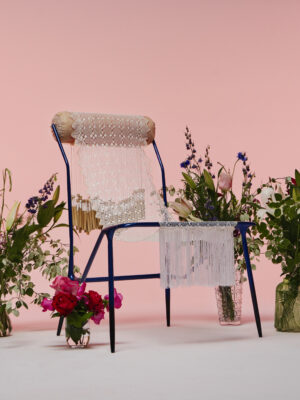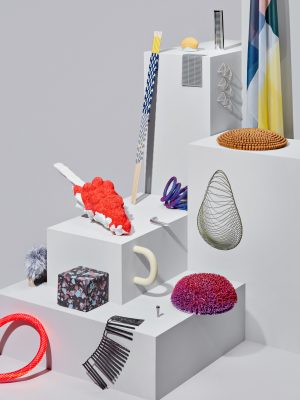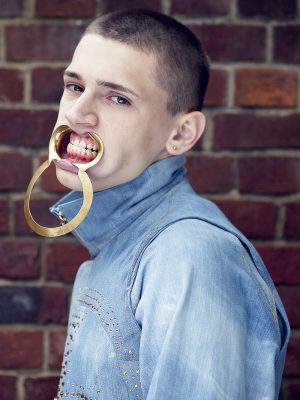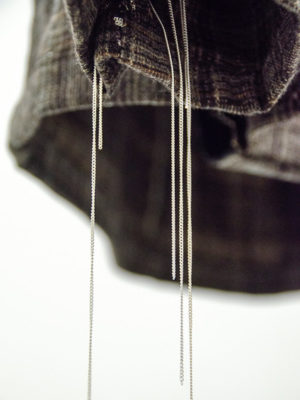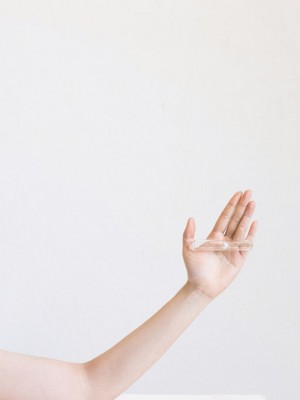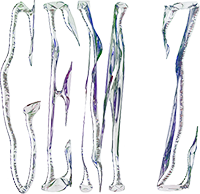UMT – project by María Luisa Blanco and Lluís Alexandre Casanovas Blanco
The UMT Chair is both a piece of furniture and a historical investigation of the politics of traditional weaving techniques such as bobbin lace and its use in decoration. Its name is both an acronym for “Universal Military Training,” which designates compulsory military training in some countries, and the Spanish phrase “Una Mirada Tranquila (A Quiet Look),” which refers to a description of the fascist publication Y: Revista para mujeres (Magazine for Women) associating the production of bobbin lace to a state of relaxation and transcendence.
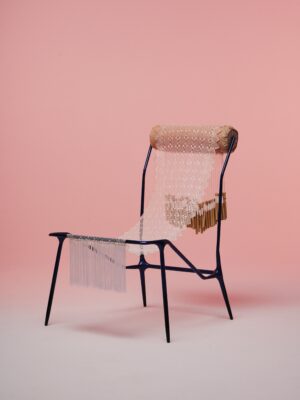
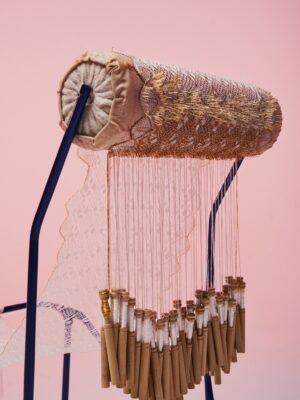
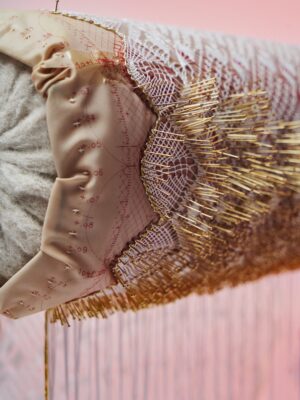
This research looks into traditional craft techniques linked to agents other than heterosexual men. Despite their fundamental contribution to the construction of modern housing, agents such as women, queer individuals and others have been overlooked in both architectural production and its history. The project, which uses the Spanish context as a case study, explores the use of bobbin lace in tablecloths, rugs, curtains and many other textile elements as key in configuring contemporary domestic interiors in Spain and elsewhere. In this country, this phenomenon remains inextricably linked to the backward steps in gender equality undertaken during the Francoist dictatorship (1939-1975). UMT subverts the historical consideration of bobbin lace as “ornamental” and “superfluous” in architectural production by making the lace the main structure of an essential, male-associated element in design history: the chair.
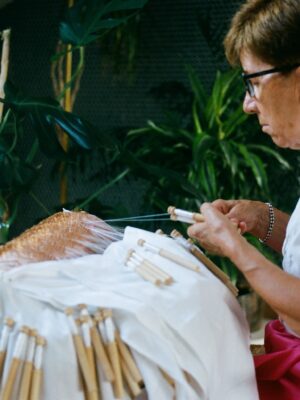
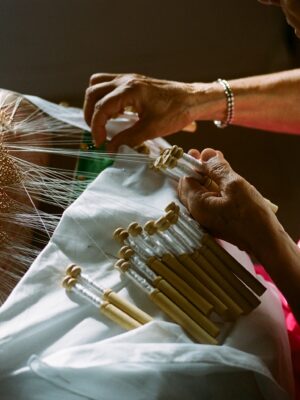
María Luisa Blanco knitted UMT chair’s backrest and seat for more than three years. As an elementary school teacher by profession, she was forced to learn bobbin lace as part of the compulsory training for female teachers she received in one of the schools of the Sección Femenina (Women Section) of the Spanish fascist party, La Falange, in Deba, Guipúzcoa, in 1963. The weaving follows a pattern combining the most characteristic types of bobbin lace stitches including the “half moon,” the “little fish,” the “three-legged spider,” and “Ulrike’s star,” amongst others, with the final design becoming a sort of technical archive. The making process is integrated within the chair, with the weaving cushion, the 24 carat gold-plated needles and the wooden bobbins becoming part of the chair. The cushion takes its shape and proportions from the pillow of the classic LC4 Chaise Longue by Le Corbusier, Pierre Jeanneret and Charlotte Perriand, whose involvement in the making of this classic modern piece of furniture has been historically overlooked. The chair’s structure and legs holding the lace were reduced to the minimum expression in order to single out the lace-made backrest and seat. The chair structure follows a geometry resembling that of an arachnid’s body, an animal with which women who make bobbin lace are often associated.
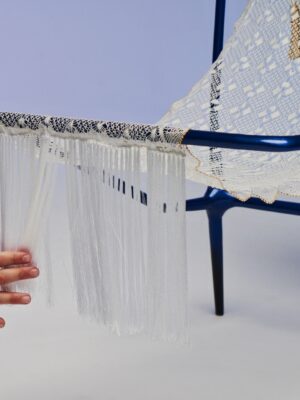
Ultimately, in UMT, bobbin lace is not considered as a neutral and depoliticized technique, but as a political activity whose celebration and study is fundamental to understand how we have built our houses during the last century.
Credits UMT
Authors: María Luisa Blanco Estébanez, Lluís Alexandre Casanovas Blanco
Bobbin Lacemaking: María Luisa Blanco Estébanez
Prototypes: Estudio Miguel Montoya
Carpentry: Kiwood Furniture
Collaborators: Irene Domínguez, Luis Lecea, Matteo Caro
Photography: Pol Rebaque
Model: Júlia Weir Casanovas
Curtain manufacture: Textiles Olcina
Do you have a new collection or a new body of work that’s simply dazzling? We want to hear from you! And remember, there’s no deadline – we welcome submissions throughout the whole year!
Every submission is a potential gem, and our team takes great care in handpicking projects that resonate with the contemporary scene. To submit your work, just email high-resolution images (5-10 pcs), image credentials, social media tag, work description (max 250 words), and artist bio (max 250 words) to veronika@current-obsession.com.
